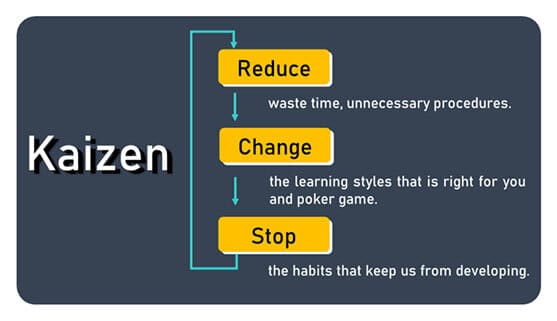Poker Strategy: Learning by Reviewing your Hands

How to Review your Hand History without Software
– For Beginners –
The first thing anyone needs to understand about poker is no one starts off as an expert. Anyone who wants to get good at poker, either online poker or live, needs to learn, study, practice and train. Starting on your path towards improvement can be daunting but can be broken down into four basic topics:
-
- The Basics of Poker: Theory, Deep Work, Mindset and Mentality
- Poker Math: Pot Odds, Equity, Expected Value (EV) and Minimum Defense Frequency (MDF)
- Table Awareness: Player Information, Action, Behavior and HUDs Profile
- Program & Software: Statistics, Analysis, Strategy and Practice
Anyone who has achieved greatness in any field will tell you that their prowess in the field has come at great personal expense and cost. Becoming great in the game of poker is no different. You will need to work hard, study harder and one of the easiest ways to do this is by utilizing the resources around you, the resources that others have put to paper from their own experience. Take the resources, learn them, use them, change them, improve on them, make them yours. When you put in the work and effort, over time, you will improve. Slowly, step-by-step, you will start to get better.
Kaizen
The Japanese concept of Kaizen teaches us that small, regular changes (output process) after careful study (input process) will slowly lead to improvement. Normally, in the process of learning the game, many poker players will study and absorb as much information as they can, the input process (a passive process). Unfortunately most of the players forget that a process to improve must have both an input and an output process (active). The output can be the sharing of ideas, opinions or asking questions about what was learned. Players tend to not comment and hesitate to question plays or honestly answer questions when asked. Players, by choosing to keep the information to themselves, slow their own growth, learning and improvement of the game as a player. Utilizing the theories of Kaizen can:
- Reduce wasted time trying to answer questions.
- Change and adapt your learning style to better fit your poker game.
- Outside help to aid in the prevention of bad habits.

Set a Goal
The hard work one puts into learning about a subject can be divided into shallow and deep work. Shallow work is a lecture, or reading a book, or playing poker. Conversely, deep work is a review of your hand history, analyzing both your errors and good plays, coming to conclusions on your play, asking and discussing your results and, of course, practice. While in shallow work, you will pick up on the basics needed to play the game and become a more rounded player, until you start spending the time doing the deep work, your improvement, while it will come, will be slow and could be costly. It is in the deep work that your true improvement will come.
Set your goals, your personal objectives and your key results in 3 steps:
-
-
-
- Choose your object – Find the goal that inspires you
- Define key result – Set the plan on how you will achieve your goal
- Track progress – Track your progress, seeing is believing.
-
-

Conclusion
Each of these 3 steps are equally important. By not setting a goal, there will not be a driving force to propel you to move forward towards your goal. By defining your Key Result, you will minimize distractions as you drive yourself toward your end goal. And by tracking your progress and results, when you start running bad, you will be able to see exactly how much you have grown since your journey started.
Reviewing your successes and mistakes after the game, and replaying them to reinforce learning and focusing on both your strengths and weaknesses. Once you finish your self-reflection, do something different, present the hand to other players. Players better than, worse than and equal to you. Each player will have different questions to ask and offer different insights, but the one thing they will all have in common is you will be able to learn something from each of them.
Spending the work and effort to improve is hard work. It takes time and patience and sometimes we all lose faith. Using the methods we looked at above, while they will not guarantee any success, will certainly assist you in making the jump to the next level. Remember, it takes time, patience, energy, hard work, and most importantly, practice.
